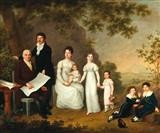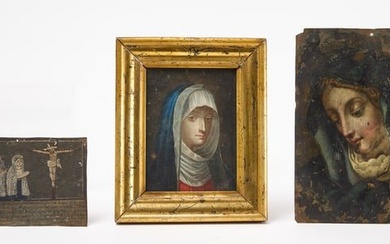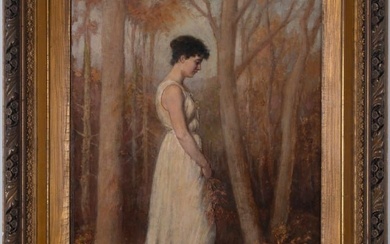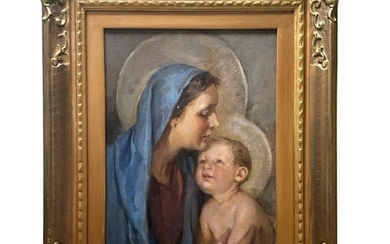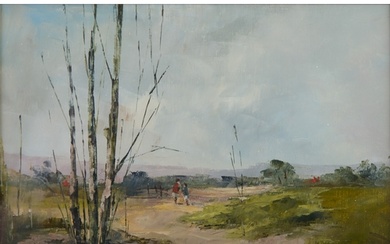Artist, first third of the 19th century
Johann Kemnitzer surrounded by his family, oil on canvas, 101.8 x 158 cm, framed, (W)
The group portrait shown here depicts the coffee house owner Johann Kemnitzer and his family. He moved from Peterwardein (Petrovaradin) to Pest in 1771, and initially worked in a tannery, where he made his wealth thanks to a lucrative patent for a particular tanning process. He purchased several plots of land on which he built a coffee house, located on the spot of the former round tower of the city wall. Kemnitzer purchased the bricks that had formed the demolished city wall, and used them to build the coffee house. The coffee house soon became very popular, and was even mentioned in contemporary German and English travel reports. For example, the Englishman Robert Townton wrote that there were plenty of coffee houses in Europe, but that hardly any of them could rival Kemnitzer’s. Descriptions suggest that the furnishings were luxurious and ornate, mentioning marble panelling, mirrors, and attractive lighting. In addition to the coffee house, the businessman also owned an additional inn in Budapest’s Lipótváros district, located within the house “To the Two Turks”. When Johann Kemnitzer died in 1831, his assets were divided between his two sons Karl and Sigmund. However, they clearly did not possess their father’s business acumen: they burned through their inheritance in a very short period of time.
The coffee shop was ravaged by floods in 1838. While it was rebuilt by the tenants, just a few years later it fell victim to the bullets of the Imperial army.
View it on
Sale price
Estimate
Time, Location
Auction House
Johann Kemnitzer surrounded by his family, oil on canvas, 101.8 x 158 cm, framed, (W)
The group portrait shown here depicts the coffee house owner Johann Kemnitzer and his family. He moved from Peterwardein (Petrovaradin) to Pest in 1771, and initially worked in a tannery, where he made his wealth thanks to a lucrative patent for a particular tanning process. He purchased several plots of land on which he built a coffee house, located on the spot of the former round tower of the city wall. Kemnitzer purchased the bricks that had formed the demolished city wall, and used them to build the coffee house. The coffee house soon became very popular, and was even mentioned in contemporary German and English travel reports. For example, the Englishman Robert Townton wrote that there were plenty of coffee houses in Europe, but that hardly any of them could rival Kemnitzer’s. Descriptions suggest that the furnishings were luxurious and ornate, mentioning marble panelling, mirrors, and attractive lighting. In addition to the coffee house, the businessman also owned an additional inn in Budapest’s Lipótváros district, located within the house “To the Two Turks”. When Johann Kemnitzer died in 1831, his assets were divided between his two sons Karl and Sigmund. However, they clearly did not possess their father’s business acumen: they burned through their inheritance in a very short period of time.
The coffee shop was ravaged by floods in 1838. While it was rebuilt by the tenants, just a few years later it fell victim to the bullets of the Imperial army.
